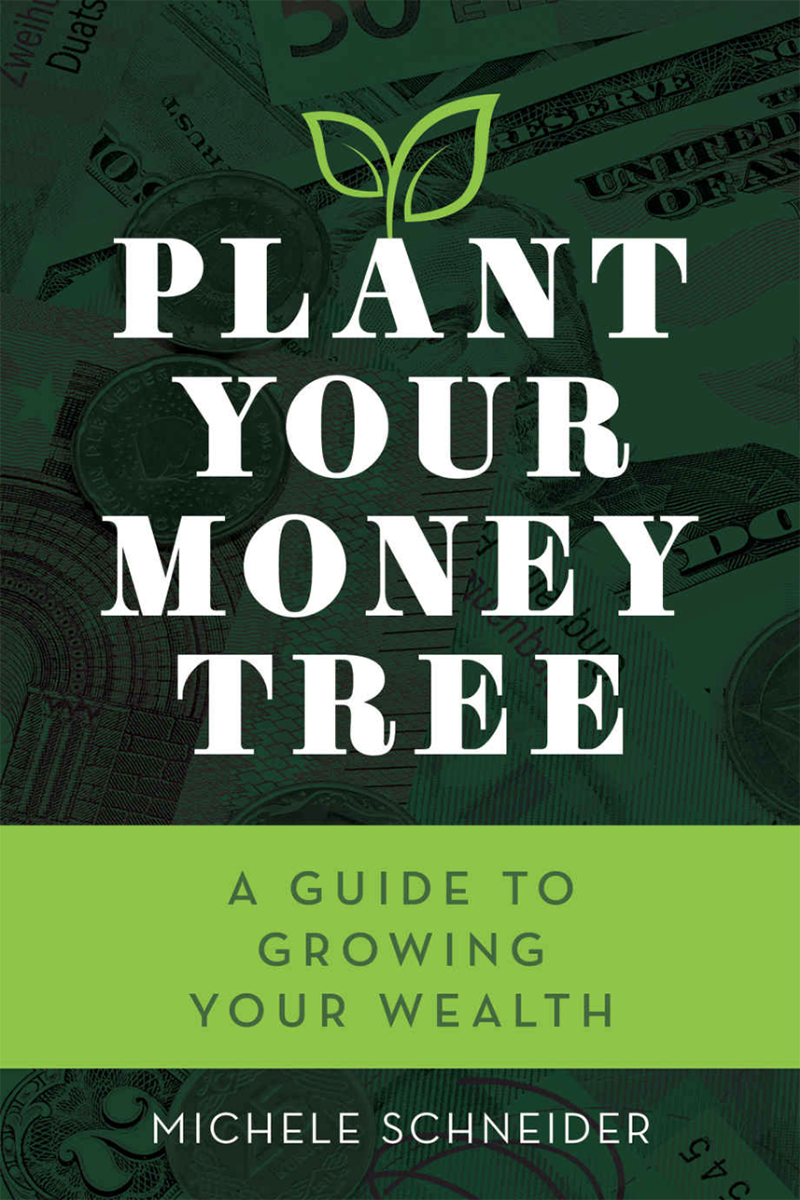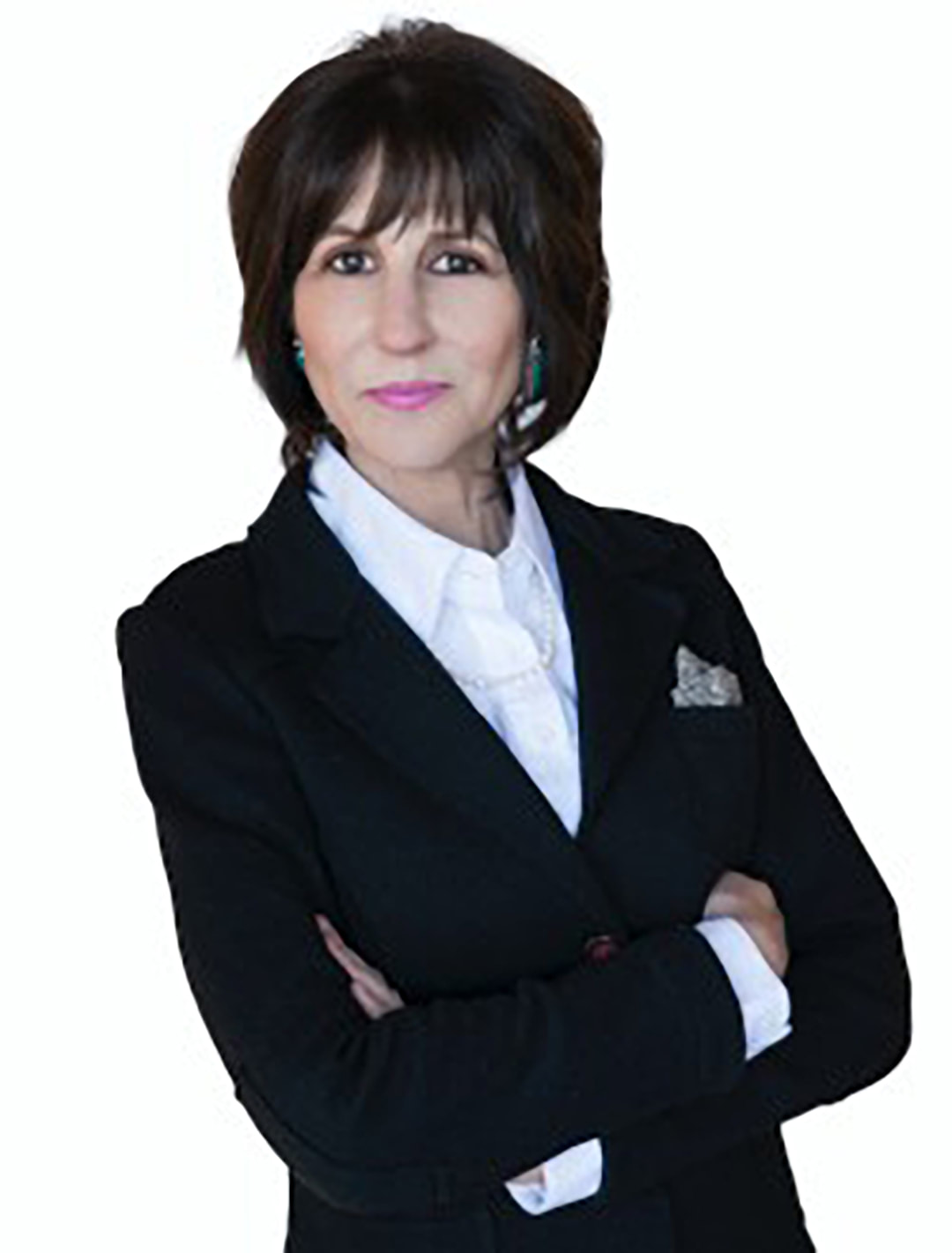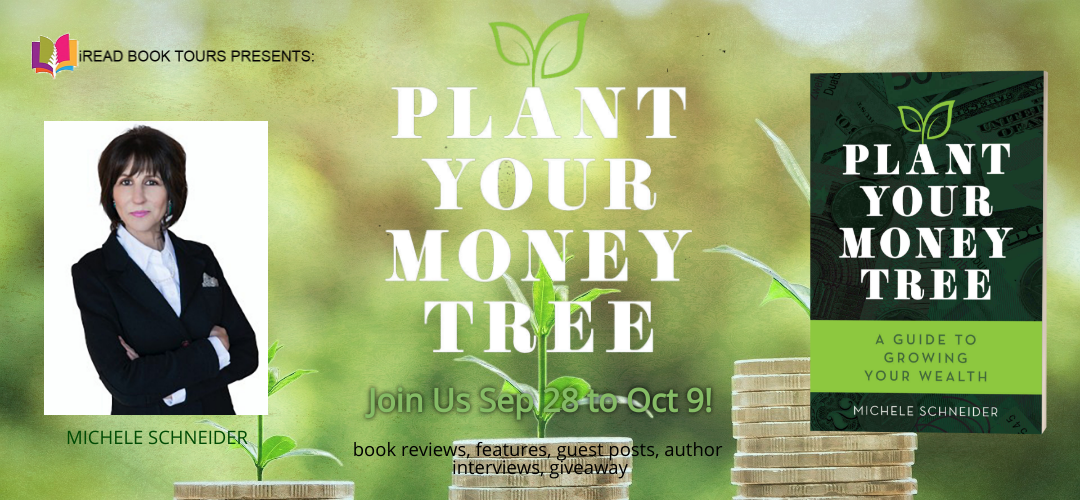
I WANT TO PARTICIPATE IN THIS TOURJoin us for this tour from Sep 28to Oct 9, 2020!
Book Details:
Book Title: Plant Your Money Tree: A Guide to Growing Your Wealth by Michele Schneider
Category: Adult Non-Fiction (18+) , 272 pages
Genre: Personal Finance, Stock Investing, Retirement
Publisher: Rowman & Littlefield Publishers
Release date: May 8, 2019
Format available for review: print, mobi (for kindle), epub, and PDF
Will send print books out: USA only
Tour dates: Sep 28 to Oct 9, 2020
Content Rating: This non-fiction, self-help book is rated G.
Book Description:
Plant Your Money Tree: A Guide to Growing Your Wealth was named 'Best New Wealth Books' by BookAuthority. On Amazon, it enjoyed the #1 New Release spot in three Amazon categories: Introduction to Investing, Business & Finance, and Retirement Planning.
Plant Your Money Tree offers readers a strategic and actionable way to look at their financial life with a completely new attitude of confidence, empowering them to make smart decisions regarding:
- What to do with their money
- How to grow their money
- When to make smart personal choices such as changing careers, guiding their kid's education, expanding their business, buying a house, putting money in a savings account, capitalizing on social trends and investing in the future
- How to manage their existing portfolios and 401Ks
In clear and accessible language, Mish Schneider walks the reader through the six most essential sectors of the U.S. economy as seen through six market phases ---bullish, caution, distribution, bearish, recuperation, and accumulation. She illustrates how to easily recognize these phases, understand their interrelationships and explains to readers why they should care. Using a personal and conversational tone, Mish's goal is to help anyone who believes the topic of the economy and growing wealth is beyond their comprehension by giving them the tools to make independent, informed decisions about their money. With that knowledge, readers will gain insight plus have practical, smart options for what to do with their finances.
Mish holds the readers' hands every step of the way with her welcoming and easy to understand language. Schneider does not endorse passive or buy-and-hold type investing. Rather, she teaches readers an evergreen methodology that adapts to every market scenario.
MY THOUGHTS ON THIS BOOK
For the most part, investing money is over my head. I guess I always feel I will invest in the wrong thing. So this book looked interesting and I wanted to see what it is all about. I wish I'd had this many years ago. Author Michele Schneider does an excellent job of explaining the six most essential sectors of the U.S. economy as seen through six market phases ---bullish, caution, distribution, bearish, recuperation, and accumulation. This was kinda Greek to me until I actually slowly broke it down and very slowly went over it many times. I still don't understand it fully, but I know much more than I did. Figure I will give it to my son, he's wanting to better understand the market. There is a wealth of information in this book. There is no way you can grasp it all just by reading through the book one time. This takes studying the book good time. I would suggest picking the information you want to learn first, depending on your knowledge, and going from there.
I am really glad to get my hands on a book such as this. It is a resource book that will stay in our family. The book cover is attractive enough to be on a coffee table for a discussion opener! If investing of any kind is something you have wanted to know more about, pick up a copy of Plant Your Money Tree: A Guide to Growing Your Wealth. I think you will find it most helpful! This book is a 5 stars for me.
A special thanks to the author/publisher for a copy of this book. I am not required to write a positive review, the opinions here are mine alone. I am including this with my review in accordance with the Federal Trade Commission’s 16 CFR, Part 255.
⭐
Buy the Book:
Amazon ~ Market Gauge ~ B&N ~ BAM
⭐
Add to Goodreads
⭐
Guess Post from Michelle Schneider
Why Saving Money is Not Necessarily the Best Way to Make Money
I come from a family that did not religiously put money in a savings bank. In his book Money Master the Game: 7 Simple Steps To Financial Freedom, Simon & Schuster 2014, Tony Robbins writes that, “the key to success: you have to make your savings automatic.” Sounds so simple yet, it is not the easiest goal to accomplish. Mr. Robbins goes on to write about “Theodore Johnson, whose first job was with the newly formed United Parcel Service in 1924.”
He writes that Johnson worked hard never making more than $14,000 per year. Considering I was making less that that 30 years later, I imagine $14k was a handsome sum of money back in the 1920’s. Mr. Robbins goes on to say that; Johnson “set aside 20% of every paycheck he received and every Christmas bonus and put it into the company stock.” (Robbins, 2014)
Now, we are getting somewhere. Johnson first off, knew to put his money in the company’s stock. Either UPS had a stock plan for employees or he simply had the good common sense to realize that UPS could grow and was a smart “supply side” investment. By the time Johnson was 90 years old, the UPS stock soared yielding him over $70 million.
Suzi Orman- “Try Harder to Save”
Her rule of thumb is simple; money you know you need or want to spend in the next few years is savings. Money you keep handy for an emergency belongs in savings. Money you hope to use soon for a down payment on a house belongs in savings. And, all savings belong in a low-risk bank savings account or money market account. The goal is to keep your money safe so that when you go to use it, it will be there.
Money you won’t need to use for at least seven years is money for investing. The goal here is to have your account grow over time to help you finance a distant goal, such as building a retirement fund. Since your goal is in the future, money for investing belongs in stocks. Suze Orman’s 10 Tips for a Fresh Financial Start, O, The Oprah Magazine, January 2009
She’s right of course-on paper. But, what happens if folks do not want to put their money in the bank because they do not collect interest? What happens when they charge you to put your money in the bank as is happening in many places in Europe with negative interest rates?
In a zero to negative interest rate environment, I suggest you learn more about the different types of bank deposit accounts offered in a FDIC (Federal Deposit Insurance Corporation) bank.
And, an offshoot of these historical low interest rates is that the stock market has prospered. Corporations pay nothing to borrow money. And flushed with cash, many corporations have maintained high dividends and profits for their shareholders.
Therefore, now is a good time to consider changing your mindset from saving money to investing money.
After all, with zero interest rates and a market that recently ran to new all-time highs, I still would not think “buy and hold” as we consider why the rates are so low (sputtering economies, global pandemic, huge job losses). However, I would consider taking the time to read about how to take advantage of the stock market (like my book for example!)
⭐

Meet the Author:
A former special education teacher, Michele "Mish" Schneider was one of the first female floor traders on Wall Street. Today she serves as Director of Trading Research and Education at MarketGauge.com, a 20 year industry-leading financial publishing company.
With Plant Your Money Tree, Mish combines her love of teaching with her world-class expertise in finance and investing. When she's not changing lives through education, Mish spends her time exploring Sante Fe, New Mexico with her husband (and fellow trader) Keith.
⭐
Author Interview
Tell us about your first published book? What was the journey like?
Plant Your Money Tree: A Guide to Growing Your Wealth took me four years to write, six days to find an agent and 30 days to find a publisher once my agent sent it out. That made the journey all so sweet. I wanted to write a book that could appeal to lay people in a way that had not been done before. That it found its way to a publisher so quickly was exhilarating and encouraging that I am on the right path
What is the key theme and/or message in the book?
The key theme is that all people have more sense about investments, whether it be on Wall Street, in their own career futures, what major their kids should focus on, buying a house or borrowing money, then they give themselves credit for. With a simple navigation system, now folks have a compass to guide them on those decisions.
I wanted to hit the middle of two genres-wealth books that tend to be condescending-“Save your money, diversify your assets, live beneath your means,” and technical guide books that are intimidating to general audiences. This is what I hoped I achieved with this book.
Are you working on anything at the present you would like to share with your readers about?
Yes. In the theme of making Wall Street and money decisions more accessible to a mainstream audience, I am writing a book on what I call the Economic Modern Family (which I briefly cover in Plant.) This is a compilation of six humanized characters with visual depictions, that represent the most important aspects of the economy. Having faces and characters that represent sectors like Retail or Biotechnology, offers readers a completely unique way to grasp what drives the economy and the markets.
What inspired you to start writing?
I’ve been writing since I was a kid. In grade school I wrote about the contrast between horror and beauty. Later, I wrote poetry and short stories. As a professional education consultant, I wrote up long observations and suggestions that were circulated in school districts for including kids with disabilities in general education. I finance I write Daily blogs and articles for several magazines. So, it seemed to me a next step to write a full book-and with a great editor to keep me inspired, it happened.
What is your work schedule like when you are writing?
I am always writing something. I spend a lot of my day tweeting to the financial community. I end my day by writing a blog. I believe the more you write the easier it is to write. For the book and the next one though, I do have a specific schedule. I write for 2-3 hours a day just for the book. I wish I could devote more time to it, but I have a full-time job in finance so allocation and discipline is key.
⭐
connect with the author: website ~ facebook ~ twitter
⭐
Tour Schedule:
Sep 28 – Rockin' Book Reviews – book review / guest post / giveaway
Sep 29 – Splashes of Joy – book review / guest post / author interview / giveaway
Sep 30 – Sefina Hawke's Books – book spotlight
Oct 1 – Locks, Hooks and Books – book review / giveaway
Oct 1 - Stephanie Jane – book spotlight / giveaway
Oct 2 – Literary Flits – book spotlight / giveaway
Oct 5 – eBook Addicts – book spotlight / giveaway
Oct 5 - Book Corner News and Reviews - book review / giveaway
Oct 6 – Jazzy Book Reviews – book spotlight / giveaway
Oct 6 - Books for Books – book spotlight
Oct 7 – 411 ON BOOKS, AUTHORS, AND PUBLISHING NEWS – book spotlight / guest post / giveaway
Oct 7 - My Journey Back – book review / giveaway
Oct 8 – Library of Clean Reads – book review / giveaway
Oct 9 – fundinmental – book spotlight / giveaway
https://widget-prime.rafflecopter.com/launch.js





No comments:
Post a Comment